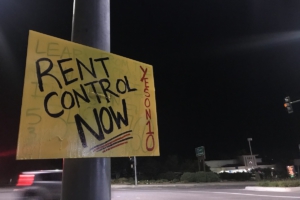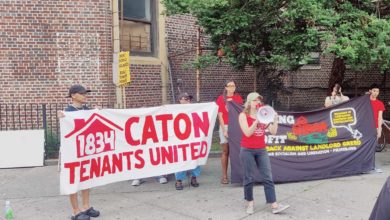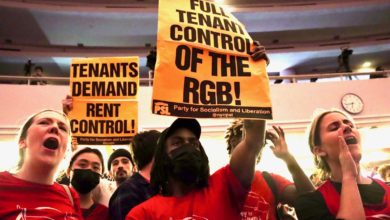 Last year, voters in Los Angeles County approved Measures H and HHH, which provide billions of additional dollars in increased sales taxes (which are paid by the majority of poor and working class people in L.A., making it a regressive tax), to be spent specifically on the provision of housing to the city’s growing homeless population, which numbers at least 50,000 at the time of writing, constituting an “emergency” situation.
Last year, voters in Los Angeles County approved Measures H and HHH, which provide billions of additional dollars in increased sales taxes (which are paid by the majority of poor and working class people in L.A., making it a regressive tax), to be spent specifically on the provision of housing to the city’s growing homeless population, which numbers at least 50,000 at the time of writing, constituting an “emergency” situation.
What is not as well known, however, is that the majority of this housing will merely be “temporary,” meaning that after 3 years, the same formerly homeless occupants will be kicked out.
In fact, many of these new, government-funded homeless programs – rather than directly placing homeless people in permanent housing – instead urge the friends and families of currently homeless people to take in or rent to them instead. The flaw in this capitalist approach to alleviating homelessness is of course obvious: individuals are made homeless again, this time without assistance, for simply being late on or missing a single rental payment.
This profit-driven approach is wasteful, irrational, and highly unsustainable. It makes the problem worse, by enriching landlords, banks and real estate developers rather than meeting the needs of the people the programs portend to be helping. Like Obama’s Affordable Healthcare Act in the case of health insurance companies, the biggest winners of a reform supposedly helping people affected by the crisis of homelessness are the social groups largely responsible for the problem in the first place. Even if Los Angeles were to “gift” (as the Federal government did temporarily in 2008) each of the city’s homeless $18,000 a year directly, as opposed to temporarily subsidizing rent, food stamps and so on, earning less than $20,000 a year is considered living far beneath the poverty level, due to high (and increasing) costs of rent, utilities, healthcare, and other daily expenses.
The members of the social class who benefit from this highly unjust and punishing situation in Los Angeles are keenly aware of their material interests. Since plans for a 65-bed homeless shelter were proposed in Koreatown two months ago, developers and realtors have ploughed huge sums into advertising campaigns playing on stereotypes and fears of increased crime levels, using their significant resources to drown out community actions in favor of the shelter.
What’s a viable alternative, towards which working and oppressed people can unite and build together, rather than relying on technocrats and officials in the pocket of the developers and landlords? In 2018, socialist Gloria La Riva ran for Governor of California as a Peace and Freedom candidate. Her platform demanded “Housing as a Human Right for All!” As a result, her campaign garnered the largest percentage of votes of any third party candidate, showing a growing number of people are actively seeking out an alternative to capitalism’s daily injustices against the working class.
For a concrete example of socialist housing policy, we can see how Cuba handles homelessness in a far more humane way, meeting the needs of 100 percent of its people, because in Cuba the government answers directly to and is maintained and overseen by the working class. Despite the harsh effects of the U.S. and E.U.-led blockade ofnCuba’s trading abilities and the resultant scarcity of production inputs, there is no homelessness in Cuba. When a natural disaster destroys existing housing, as Hurricanes Maria and Irma did in 2017, Cuba’s socialist government funds rapid rebuilding efforts. There are no landlords in Cuba; one of the first decrees of the revolutionary government in 1959 was the nationalization of all housing. These social rights are not a utopia or an unreachable project: they are a living reality in other parts of the world and goals to which the working and oppressed people of this country are capable of fighting for.






